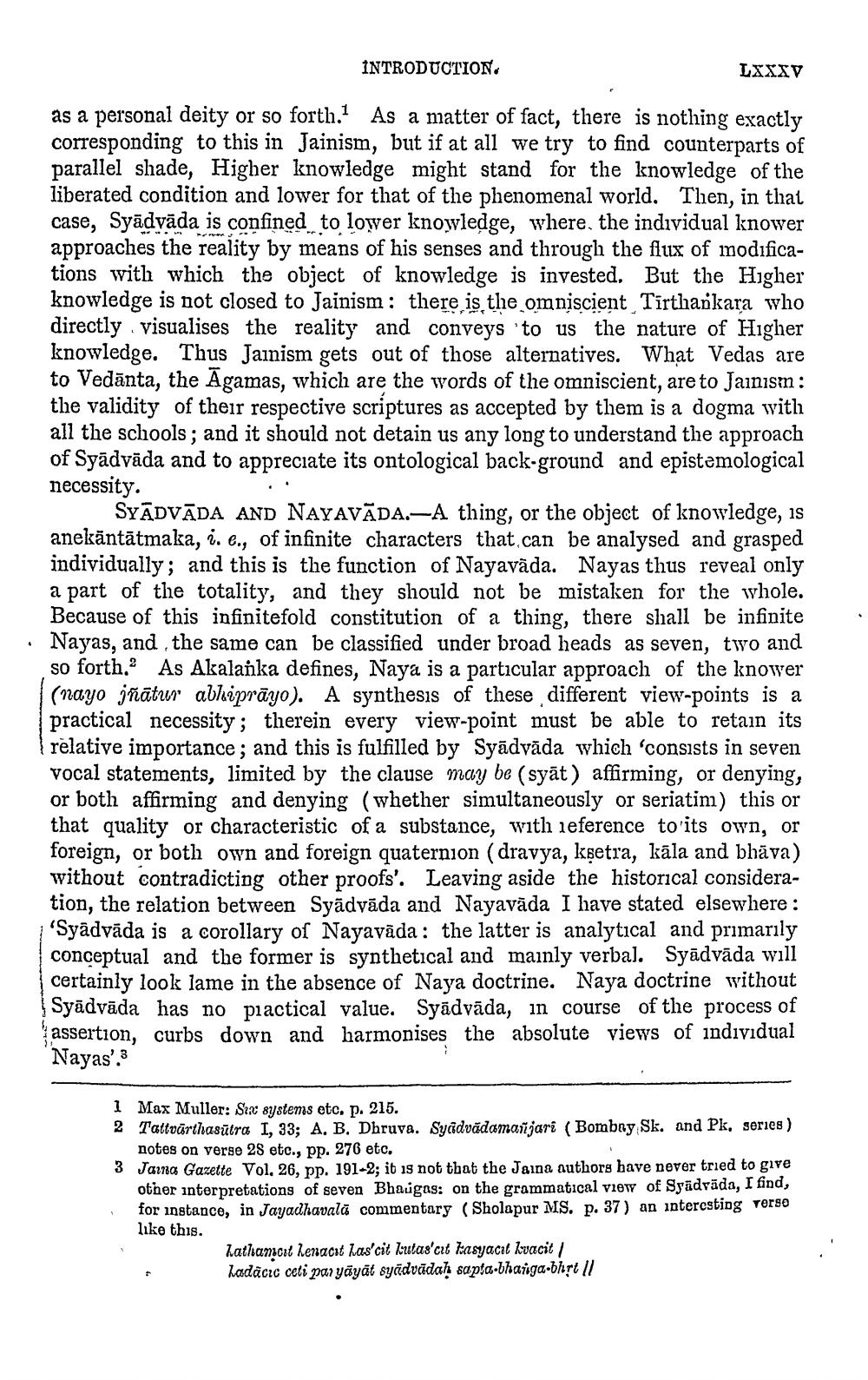________________
INTRODUCTION.
LXXXV
as a personal deity or so forth. As a matter of fact, there is nothing exactly corresponding to this in Jainism, but if at all we try to find counterparts of parallel shade, Higher knowledge might stand for the knowledge of the liberated condition and lower for that of the phenomenal world. Then, in that case, Syādvāda is confined to lower knowledge, where the individual knower approaches the reality by means of his senses and through the flux of modifications with which the object of knowledge is invested. But the Higher knowledge is not closed to Jainism : there is the omniscient Tīrtharkara who directly visualises the reality and conveys 'to us the nature of Higher knowledge. Thus Jainism gets out of those alternatives. What Vedas are to Vedānta, the Āgamas, which are the words of the omniscient, are to Jainism: the validity of their respective scriptures as accepted by them is a dogma with all the schools; and it should not detain us any long to understand the approach of Syādvāda and to appreciate its ontological back-ground and epistemological necessity.
SYĀDVĀDA AND NAYAVĀDA.—A thing, or the object of knowledge, is anekāntātmaka, i. e., of infinite characters that can be analysed and grasped individually; and this is the function of Nayavāda. Nayas thus reveal only a part of the totality, and they should not be mistaken for the whole. Because of this infinitefold constitution of a thing, there shall be infinite Nayas, and the same can be classified under broad heads as seven, two and so forth,2 As Akalanka defines, Naya is a particular approach of the knower (nayo jñātur abhiprāyo). A synthesis of these different view-points is a practical necessity; therein every view-point must be able to retain its relative importance; and this is fulfilled by Syādvāda which 'consists in seven vocal statements, limited by the clause may be (syāt) affirming, or denying, or both affirming and denying (whether simultaneously or seriatin) this or that quality or characteristic of a substance, with neference to its foreign, or both own and foreign quaternion (dravya, ksetra, kāla and bhāva) without contradicting other proofs'. Leaving aside the historical consideration, the relation between Syādyāda and Nayavāda I have stated elsewhere : 'Syädvāda is a corollary of Nayavāda: the latter is analytical and primarily conceptual and the former is synthetical and mainly verbal. Syādvāda will certainly look lame in the absence of Naya doctrine. Naya doctrine without Syādvāda has no practical value. Syādvāda, in course of the process of assertion, curbs down and harmonises the absolute views of individual Nayas'.3
1 Max Muller: Stac systems etc. p. 215. 2 Tattvärthasūtra I, 33; A, B, Dhruva. Syadvādamasjari (Bombay Sk. and Pk, series)
notes on verse 28 etc., pp. 276 etc. 3 Jamna Gazette Vol. 26, pp. 191-2; it is not that the Jaina authors have never tried to give
other interpretations of seven Bhaugas: on the grammatical view of Syadrāda, I find, for instance, in Jayadhavala commentary Sholapur MS. p. 37) an interesting verso like this.
hathamcıt Tenacit has'cit kutas'cit tasyacıt kvacit/ hadācic ceti paryāyāt syödvodah sapta-bhaiga.blist il




